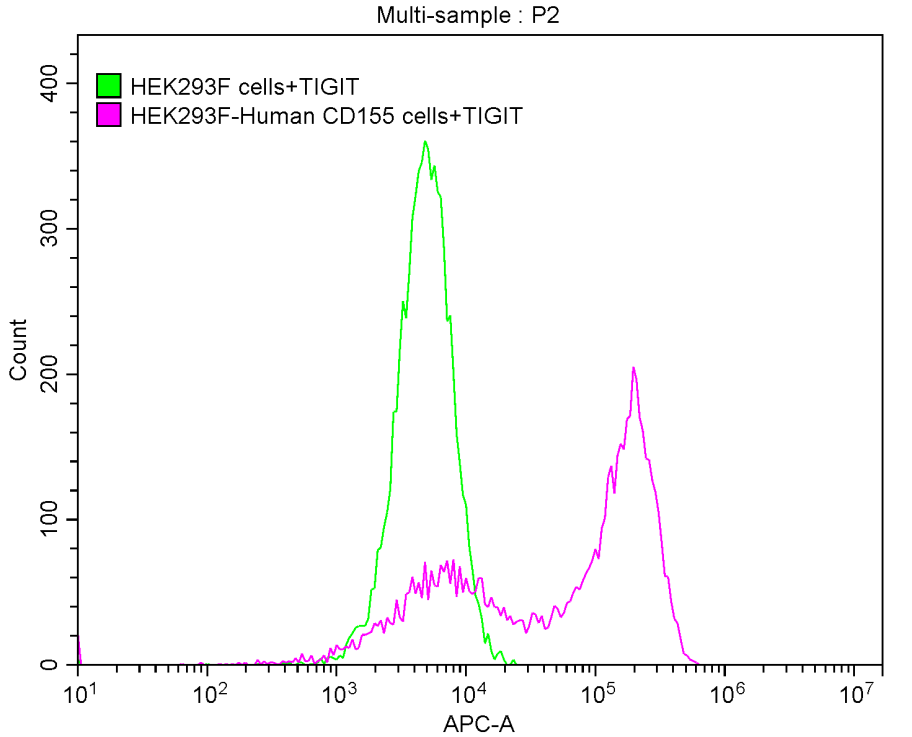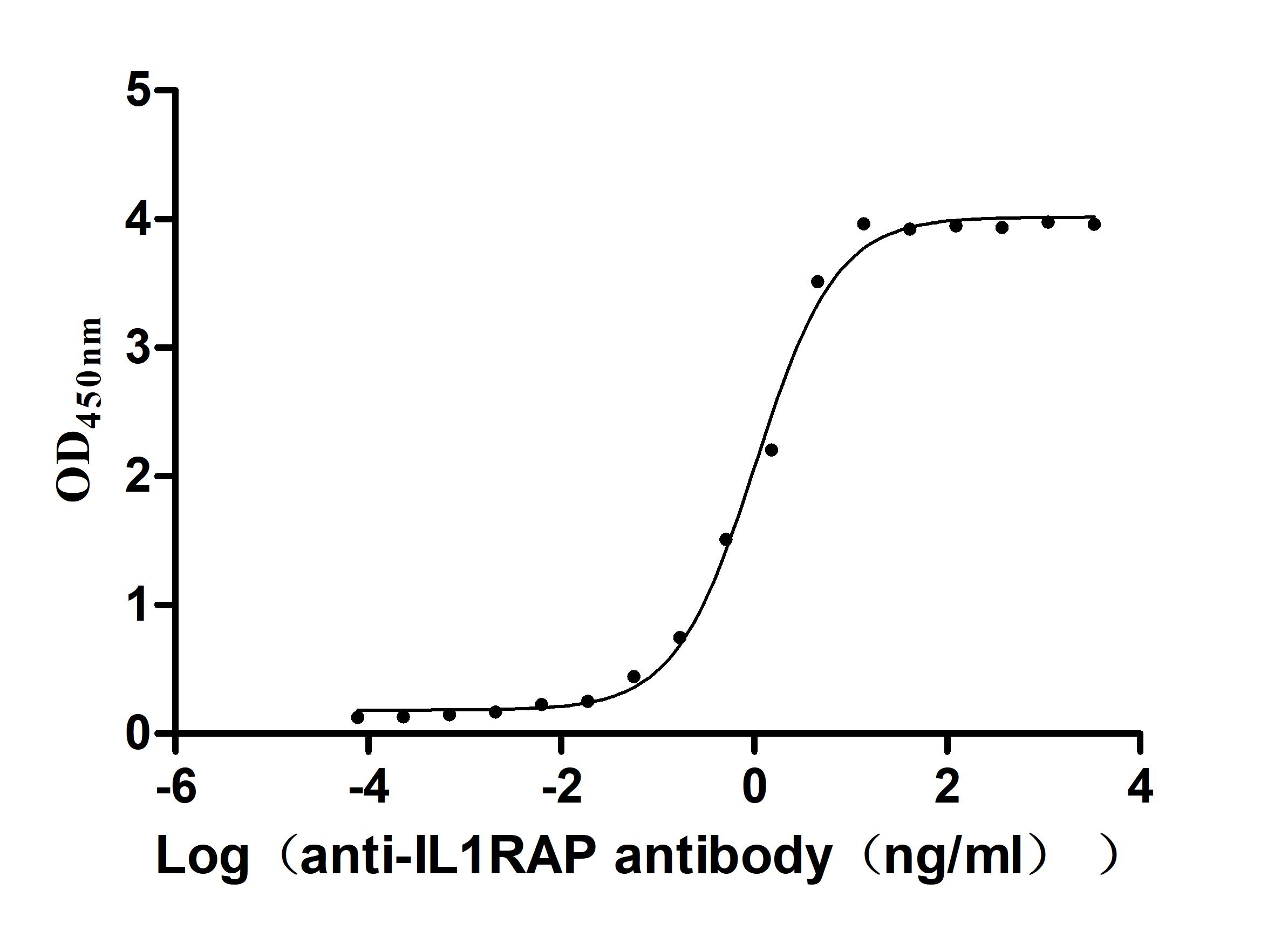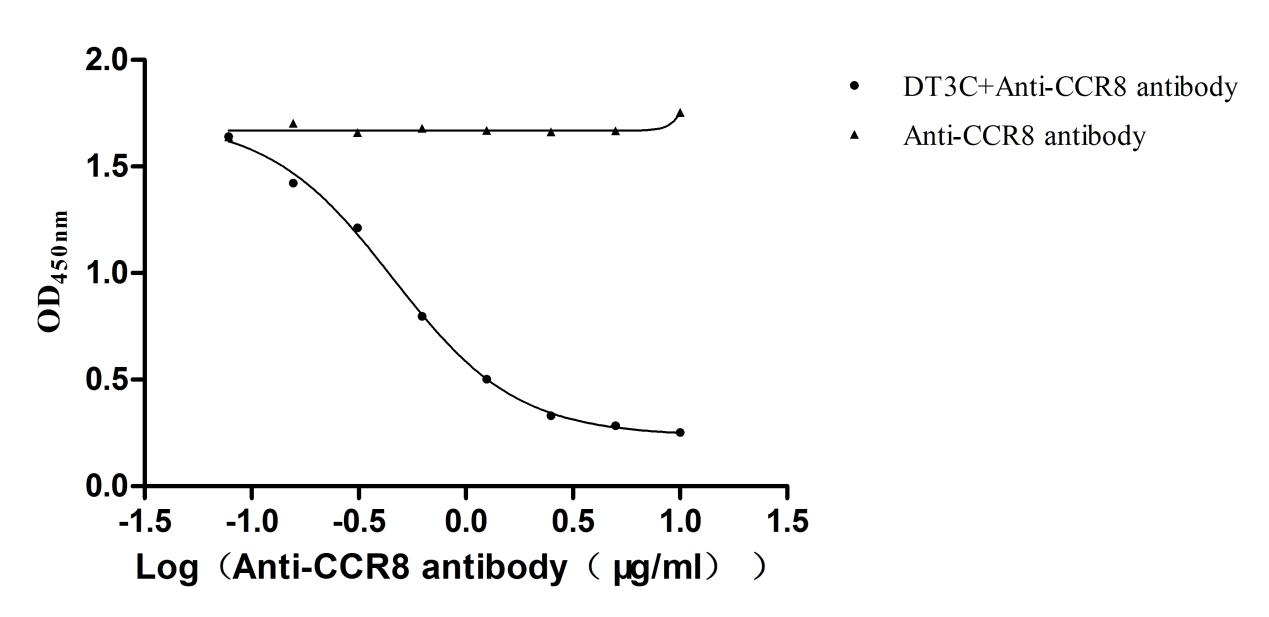Recombinant Mouse Probable C-C chemokine receptor type 3 (Ccr3)
-
货号:CSB-CF004842MO
-
规格:
-
来源:in vitro E.coli expression system
-
其他:
产品详情
-
基因名:
-
Uniprot No.:
-
别名:Ccr3; Cmkbr1l2; Cmkbr3; Probable C-C chemokine receptor type 3; C-C CKR-3; CC-CKR-3; CCR-3; CCR3; CKR3; Macrophage inflammatory protein 1-alpha receptor-like 2; MIP-1 alpha RL2; CD antigen CD193
-
种属:Mus musculus (Mouse)
-
蛋白长度:Full length protein
-
表达区域:1-359
-
氨基酸序列MAFNTDEIKTVVESFETTPYEYEWAPPCEKVRIKELGSWLLPPLYSLVFIIGLLGNMMVV LILIKYRKLQIMTNIYLFNLAISDLLFLFTVPFWIHYVLWNEWGFGHYMCKMLSGFYYLA LYSEIFFIILLTIDRYLAIVHAVFALRARTVTFATITSIITWGLAGLAALPEFIFHESQD SFGEFSCSPRYPEGEEDSWKRFHALRMNIFGLALPLLIMVICYSGIIKTLLRCPNKKKHK AIRLIFVVMIVFFIFWTPYNLVLLFSAFHSTFLETSCQQSKHLDLAMQVTEVIAYTHCCI NPVIYAFVGERFRKHLRLFFHRNVAVYLGKYIPFLPGEKMERTSSVSPSTGEQEISVVF
Note: The complete sequence including tag sequence, target protein sequence and linker sequence could be provided upon request. -
蛋白标签:N-terminal 10xHis-tagged
-
产品提供形式:Liquid or Lyophilized powder
Note: We will preferentially ship the format that we have in stock, however, if you have any special requirement for the format, please remark your requirement when placing the order, we will prepare according to your demand. -
缓冲液:Lyophilized from Tris/PBS-based buffer, 6% Trehalose, pH 8.0
-
储存条件:Store at -20°C/-80°C upon receipt, aliquoting is necessary for mutiple use. Avoid repeated freeze-thaw cycles.
-
保质期:The shelf life is related to many factors, storage state, buffer ingredients, storage temperature and the stability of the protein itself.
Generally, the shelf life of liquid form is 6 months at -20°C/-80°C. The shelf life of lyophilized form is 12 months at -20°C/-80°C. -
货期:Basically, we can dispatch the products out in 1-3 working days after receiving your orders. Delivery time may differ from different purchasing way or location, please kindly consult your local distributors for specific delivery time.Note: All of our proteins are default shipped with normal blue ice packs, if you request to ship with dry ice, please communicate with us in advance and extra fees will be charged.
-
注意事项:Repeated freezing and thawing is not recommended. Store working aliquots at 4°C for up to one week.
-
Datasheet & COA:Please contact us to get it.
相关产品
靶点详情
-
功能:Receptor for C-C type chemokine. Binds and responds to a variety of chemokines, including CCL11, CCL26, CCL7, CCL13, RANTES(CCL5) and CCL15. Subsequently transduces a signal by increasing the intracellular calcium ions level. In addition acts as a possible functional receptor for NARS1.
-
基因功能参考文献:
- We found abnormalities in sleep patterns in the resting phase and in the number of Hcrt neurons in Ccr3 KO mice. These observations suggest a role for CCR3 in sleep-wake regulation in narcolepsy patients PMID: 29186205
- Study found that CCR3 plays a crucial role in neuronal injury. CCR3 deletion or inhibition protects neurons from oxygen-glucose-deprivation-induced cytotoxicity in primary cortical cultures. CCR3 KO mice also displayed significant reduction of infarct volume in the brain after experimental stroke. PMID: 27822494
- Retinal inhibition of CCR3 induces retinal cell death in a murine model of choroidal neovascularization. PMID: 27309355
- Periprostatic adipocytes drive prostate cancer progression in obesity via CCL7 secretion which stimulates CCR3 expressing tumor cells. PMID: 26756352
- The RNA interference therapy to CCR3 by local administration pernasal can suppress the process of the development, migration and invasion of the allergic rhinitis eosinophil. PMID: 24507645
- Chemokine CCR3 ligands-binding peptides derived from a random phage-epitope library. PMID: 23183094
- CCR3 plays no role in choroidal neovascularization development. PMID: 22183343
- The collective data suggest that activation of the CB2R results in "cross-talk" with CCR-3, resulting in decreased migratory responsiveness to Tat. PMID: 21735070
- CCR3 plays no significant role in choroidal neovascularization development. PMID: 21358803
- The CCR3/eotaxin pathway is involved in the regulation of allergen-driven in situ haematopoiesis and the accumulation/mobilization of eosinophil-lineage-committed progenitor cells in the lung. PMID: 20875077
- Trafficking to the cell surface of nascent CCR3 is critically dependent on a C-terminal leucine residue, suggestive of specific mechanisms for CCR3 export. PMID: 20541248
- CCR3-deficiency does not alter mast cell phenotype or ability to migrate in vitro PMID: 20050333
- CCR3 is essential for skin eosinophilia and airway hyperresponsiveness in a murine model of allergic skin inflammation. PMID: 11877470
- 3-fold increased expression in IL-5 transgenic mice leads to increased responsiveness of eosinophils to eotaxin PMID: 12083417
- role of CCR3 in the endogenous mechanisms involved in the inflammatory cell recruitment in an experimental model of allergic cutaneous reaction PMID: 12118095
- CCR3 is constitutively expressed on CD34+ progenitor cells obtained from cord blood, and it behaves as a functional receptor as it transduces in vitro and in vivo chemotactic responses after binding to its ligand eotaxin. PMID: 12496441
- Eosinophils survive longer under the influence of CCR3-reactive chemokines, which aid the infiltration of these cells into the tissue and that eosinophils may survive even longer if they encounter survival factors at local inflammatory sites. PMID: 12673069
- Distinct acidic and basic residues within CCR3 determine both receptor expression and activation by the eotaxins. PMID: 16102831
- The CCR3 pathway plays a fundamental role in eosinophil recruitment during ovalbumin-induced experimental asthma. PMID: 16210640
- CCL11 and CCR3 are important in the pulmonary recruitment of granulocytes and play significant pathogenic roles in bleomycin-induced lung fibrosis. PMID: 16314464
- YM-344031, a novel and selective small molecule CCR3 antagonist, potently inhibited ligand binding (IC(50)=3.0nM), ligand-induced Ca(2+) flux (IC(50)=5.4nM), and the chemotaxis of human CCR3-expressing cells (IC(50)=19.9nM). PMID: 16343433
- eosinophils via CCR3 have a central role in chronic allergic airway disease PMID: 17060636
- We report that in the absence of eotaxin-2 or CCR3, there was a profound reduction in IL-13-induced eosinophil recruitment into the lung lumen. IL-13 transgenic mice deficient in CCR3 had a 98% reduction in lung eosinophils. PMID: 17148674
- agonists and antagonists of CCR3 appear to occupy overlapping sites within the transmembrane helical bundle, suggesting a fine line between agonism and antagonism of chemokine receptors PMID: 17635911
- Heligmosomoides infection led to reduction in number of lung eosinophils with decreased levels of eotaxin in bronchoalveolar lavage fluid, lowered of CCR3 receptor expression on eosinophils and impaired chemotaxis of these cells toward eotaxin. PMID: 17650182
- in knock-out mice, immediate hypersensitivity reactions in the conjunctiva are ablated despite normal numbers of tissue mast cells and levels of IgE PMID: 19147836
- Genetic or pharmacological targeting of CCR3 or eotaxins inhibited injury-induced choroidal neovascularisation in mice PMID: 19525930
显示更多
收起更多
-
亚细胞定位:Cell membrane; Multi-pass membrane protein.
-
蛋白家族:G-protein coupled receptor 1 family
-
组织特异性:Detected in skeletal muscle and in trace amounts in leukocytes.
-
数据库链接:
KEGG: mmu:12771
STRING: 10090.ENSMUSP00000039107
UniGene: Mm.57050
Most popular with customers
-
Recombinant Human T-cell immunoreceptor with Ig and ITIM domains (TIGIT), partial (Active)
Express system: Mammalian cell
Species: Homo sapiens (Human)
-
Recombinant Human IGF-like family receptor 1 (IGFLR1), partial (Active)
Express system: Mammalian cell
Species: Homo sapiens (Human)
-
Recombinant Rat Microtubule-associated protein tau (Mapt) (Active)
Express system: Mammalian cell
Species: Rattus norvegicus (Rat)
-
Recombinant Dog Angiopoietin-2 (ANGPT2) (Active)
Express system: Mammalian cell
Species: Canis lupus familiaris (Dog) (Canis familiaris)
-
Recombinant Macaca fascicularis Trophoblast glycoprotein (TPBG), partial (Active)
Express system: Mammalian cell
Species: Macaca fascicularis (Crab-eating macaque) (Cynomolgus monkey)
-
Recombinant Macaca fascicularis Interleukin 1 receptor accessory protein(IL1RAP), partial (Active)
Express system: Mammalian cell
Species: Macaca fascicularis (Crab-eating macaque) (Cynomolgus monkey)
-
Recombinant Human C-C chemokine receptor type 5 (CCR5)-VLPs (Active)
Express system: Mammalian cell
Species: Homo sapiens (Human)
-
Recombinant DT3C (Diphtheria toxin & spg 3C domain) for Antibody Internalization Assay (Active)
Express system: E.coli
Species: N/A




















